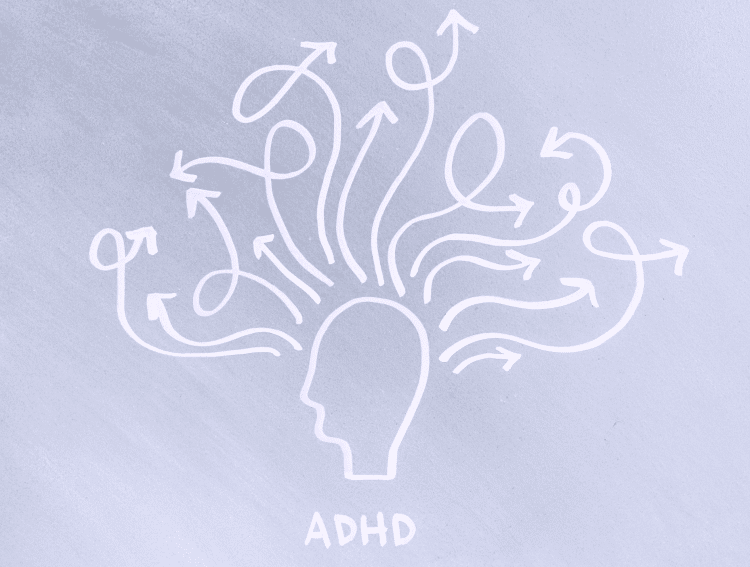Setting Limits: Boundaries and Attachment Styles

Published on December 20, 2022
Difficulties setting boundaries are commonly linked to the different attachment styles – but how exactly does an insecure attachment influence how we implement and respond to boundaries?
It’s hard not to feel guilty about saying “no” to a loved one. But it seems quite paradoxical that the people closest to us are the ones with whom we have the most difficulties expressing limits. Yet, nevertheless, this is more often than not how we feel.
This difficulty in saying “no” often boils down to how we set boundaries in our relationships.
We all have unique needs and limits – and our ability to understand and express these can be better understood through our attachment styles. To help you better comprehend how your boundaries are affected by your attachment style, this article covers:
- What boundaries are
- Overstepping boundaries and what it looks like
- How boundary overstepping affects attachment styles
- Four key steps to managing boundaries
Don’t know your attachment style yet? Take our free Attachment Style Quiz and discover your attachment style within minutes!
What are Boundaries?
Personal boundaries are essentially the invisible lines we create for ourselves in terms of what behaviors make us comfortable around others. Boundaries in relationships can come in two main forms: physical and emotional.
Physical boundaries are usually associated with our visible barriers – our bodies and the space around us. Violations of physical boundaries include invading personal space and unwarranted touching. However, privacy is also a physical boundary. So someone reading our text messages or emails would violate this physical boundary.
In contrast, emotional boundaries concern those around our feelings and thoughts – such as not wanting our emotions to be invaded, or feeling like we have to take care of those of others. Due to their less tangible nature, emotional boundaries can be more difficult to set. Although it may be relatively easy to avoid oversharing with someone you don’t know particularly well, it can be harder to do so with someone you care about. Because emotional boundaries are invisible, we usually have to set them verbally (or sometimes through body language). Yet doing so often requires a certain level of confrontation and assertiveness – which can sometimes be a challenge.
But establishing boundaries is important for balanced and healthy relationships. For example, although some people are content texting a partner incessantly, others may find it too intrusive – a clash of boundaries that would probably lead to interpersonal issues in a relationship. Everyones’ limits are different – so ours aren’t always going to be obvious to the people in our lives. Yet, being assertive and expressing our boundaries in healthy ways can help forge secure, safe relationships in which we feel like our needs and wants aren’t being compromised.

What Does Boundary Overstepping Look Like?
Truthfully, we’ve all met someone who has little awareness or regard for others and their feelings. That person who just doesn’t seem to care that you seem uncomfortable and is generally draining. They’re like the stereotype of the nosey aunt who asks persistent questions and acts offended if we don’t answer. In the end, we often feel obligated to respond and, as a result, feel a bit violated. But as upsetting as such situations can be, it’s our boundaries within close relationships that tend to have the most impact on our well-being and sense of self.
There are two main types of boundary overstepping within relationships: distance and intrusion. This is because people typically need a healthy balance of both space and proximity within a partnership to feel connected and secure, yet still autonomous.
Research has shown that avoidant attachers will likely feel like their boundaries are intruded upon much more easily than people with the other attachment styles. On the other hand, anxious attachers are more likely affected by distance, and, resultingly, might be the ones intruding on others’ need for space.
Additionally, the digital world has added extra complications to establishing boundaries – from both relationships and the world around us. People with high attachment anxiety (i.e. anxious attachers and disorganized attachers) have a greater tendency to engage in “electronic intrusion,” which involves actions such as looking through a partner’s phone without permission, monitoring their social media activity, or tracking their whereabouts via social media. Moreover, research has shown that people with anxious or disorganized attachment may use social media to monitor partners even after they’ve broken up. This indirect intrusion of boundaries can be especially problematic because it doesn’t allow for closure on either side.
How Does Boundary Overstepping Affect the Different Attachment Styles?
As previously mentioned, boundaries are primarily about distance and proximity. Similarly, attachment styles can be distinguished by either a fear of abandonment or a fear of intimacy – and these fears influence how people respond to boundary overstepping.
Disorganized Attachment and Boundaries
Studies have demonstrated that people with the disorganized attachment style have the lowest threshold for intrusion of their personal space. Meaning that disorganized attachers have minimal tolerance for physical proximity with others. This is also true for avoidant attachers – just not quite to the same extent. This finding makes sense when considering that the disorganized and avoidant attachment styles are characterized by a fear of intimacy and rejection. So, people with these styles prefer to push people away before they become too emotionally close.
Anxious Attachment and Boundaries

People with the anxious attachment style have quite starkly different parameters around their boundaries than avoidant and disorganized attachers. Avoidant attachers tend to be quite intrusive on others’ physical and emotional boundaries, and also tend to react ambivalently when others encroach on theirs. However, during arguments or conflict, if an anxious attacher (and a disorganized attacher with high anxiety) feels as though their boundaries were encroached upon, they tend to have heightened emotional responses, such as anger, hurt, and confusion. However, due to an anxious attacher’s fear of abandonment, they’re likely to quickly forgive a partner for their intrusion.
Avoidant Attachment and Boundary Boundaries
In contrast to disorganized attachers’ low threshold for actual intrusion on their physical space, and anxious attachers’ relative ambivalence towards it, avoidant attachers are more likely to feel like their partner is being intrusive. Even if they’re not necessarily doing so. Avoidant attachers are highly sensitive to intrusions on their boundaries, so they’re prone to distancing themselves both physically and emotionally from partners. Interestingly, avoidant attachers are less likely than people with the other insecure attachment styles to react angrily to intrusions on their boundaries. But this is likely to do with their tendency to tune out emotionally. Nevertheless, it may undermine their attempts to establish boundaries with others.
Also, if an avoidant attacher does choose to encroach on a partner’s boundaries, they typically do so out of concern or worry for their partner’s well-being rather than a need to satisfy their own insecurities.
Four Key Steps to Managing Boundaries
People who have issues with establishing and maintaining boundaries in close relationships often struggle with mood disorders such as anxiety and depression, low self-esteem, helplessness, and feelings of being underappreciated and unsupported. It’s therefore very clear that a lack of boundaries greatly impacts people’s mental health and well-being.
In recognition of this, as well as considering the research in the area, the following are four key steps you can take toward building healthier boundaries and relationships:
#1. Discover your own boundaries
Learning about your personal boundaries, both physical and emotional, can help you figure out what you need in relationships. Dig a little deeper into your previous relationship patterns, including what worked and what didn’t, to help understand what could have improved your bond.
#2. Find out your attachment style
Being aware of your attachment style can really help identify your boundary needs, as you can more easily discern which types of boundaries you are likely to require (e.g. as an anxious attacher you need more proximity than an avoidant attacher). If you haven’t yet, take the free quiz on our website to find out.
#3. Be honest about your limitations and expectations
This step can be difficult, especially with a loved one – someone to who we’d like to offer so much of ourselves. However, honesty and open communication are necessary for boundary setting and can make these boundaries much easier to enforce when needed.
#4. Recognize that you’re not alone
Although you might feel like your need for space or proximity differs greatly from your partner, they may also have their own needs and not fully understand how to express them. Practicing open and non-judgmental communication can bring you a long way toward a healthier, more balanced relationship.
Final Words on Attachment and Boundaries
In this article, we’ve outlined the concept of boundaries, and how overstepping them can be damaging, particularly for people with insecure attachment styles. We’ve also shown that awareness of our attachment style and that of our partners can be very useful in understanding our needs for emotional and physical boundaries and reactions to overstepping them. Knowledge is power, so with honesty, patience, and care for yourself and your loved one, you can establish healthy boundaries and more satisfying relationships.
If you need some further inspiration on how to do this, look into one of our insecure attachment style workbooks and check out an array of helpful and insightful exercises to help you on your journey to improving your relationships and mental health.

References
Fox, J., Warber, K.M. (2014). Social Networking Sites in Romantic Relationships: Attachment, Uncertainty, and Partner Surveillance on Facebook. Cyberpsychology, Behavior, and Social Networking, 17(1), 3–7.
Kaitz, M. Bar-Haim, Y., Lehrer, M., Grossman, E. (2010). Adult attachment style and interpersonal distance. Attachment & Human Development, 6(3), 285-304.
Katherine, A. (1993). Boundaries: Where You End and I Begin. Simon and Schuster.
Katherine, A. (2013). Boundaries in an Overconnected World: Setting Limits to Preserve Your Focus, Privacy, Relationships, and Sanity. New World Library.
Hawkins, D. (2007). Dealing with CrazyMakers in Your Life: Setting Boundaries in Unhealthy Relationships. Harvest House Publishers.
Lavy, S., Mikulincer, M., Shaver, P.R. (2010). Autonomy-proximity imbalance: An attachment theory perspective on intrusiveness in romantic relationships. Personality and Individual Differences, 48(55), 552-556.
Reed, L.A., Tolman, R.M., Safyer, P. (2015). Too close for comfort: Attachment insecurity and electronic intrusion in college students’ dating relationships. Computers in Human Behavior, 50, 431-438.











 Get mental health tips straight to your inbox
Get mental health tips straight to your inbox








